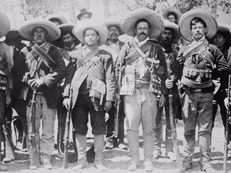Throughout history, there are several works of literature that can guide us and help us to understand in a very exhaustive way a certain era of the unique history of our world. Sometimes and in various contexts it may be that the pen and the inkwell, when accompanied by a current mind and a surface on which the owner of that clever and perceptive mind can write, are the most useful tools for painting a historical moment. Surely, the outstanding poem A Roosevelt by Nicaraguan Rubén Darío written in 1904 is a good example of this phenomenon, as it allows the reader to perceive the acute feelings of Latin Americans more than a century ago during the summit of the era of US imperialism in American continent.
Written in the early twentieth century during the presidency of Theodore Roosevelt, this poem can be seen primarily as a social order text and in addition to a strong denunciation against the continued interference of the United States government in national matters concerning Latin American countries , particularly from the Caribbean. The United States, which is described by the poem as a powerful but unjust entity that continues to carry out its interventionist and selfish policies, is represented by the unpopular and imposing figure of Theodore Roosevelt – its imperialist president at that time that had already harmed and considerably dismissed the Latin American people and lands during his presidency.
Undoubtedly, this work forms an essential and valuable part of the historical complex not only of Latin America but of the whole world, and that is why it is worth reading and analyzing it. In addition, despite the fact that it is often despised by many people, this poem continues with the tradition of literature that has a truly significant impact on history and even today to better understand the events of our past


